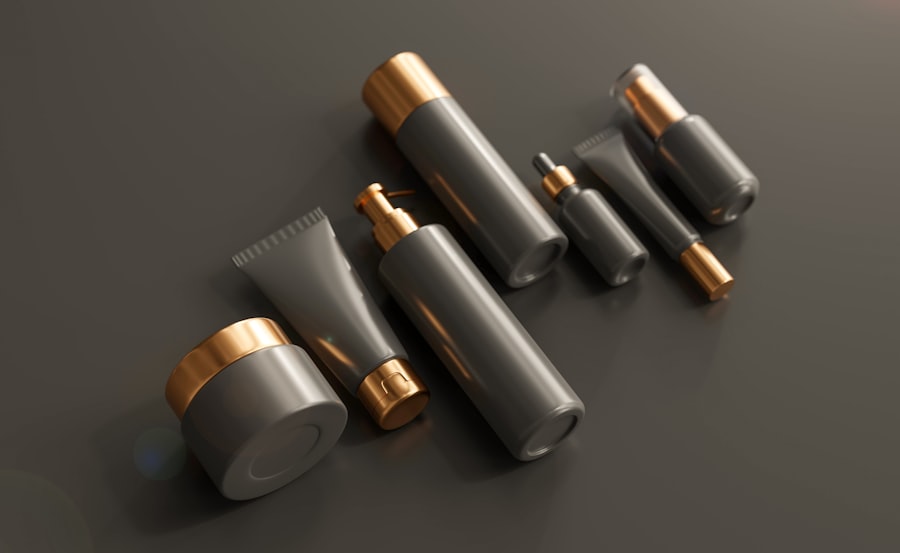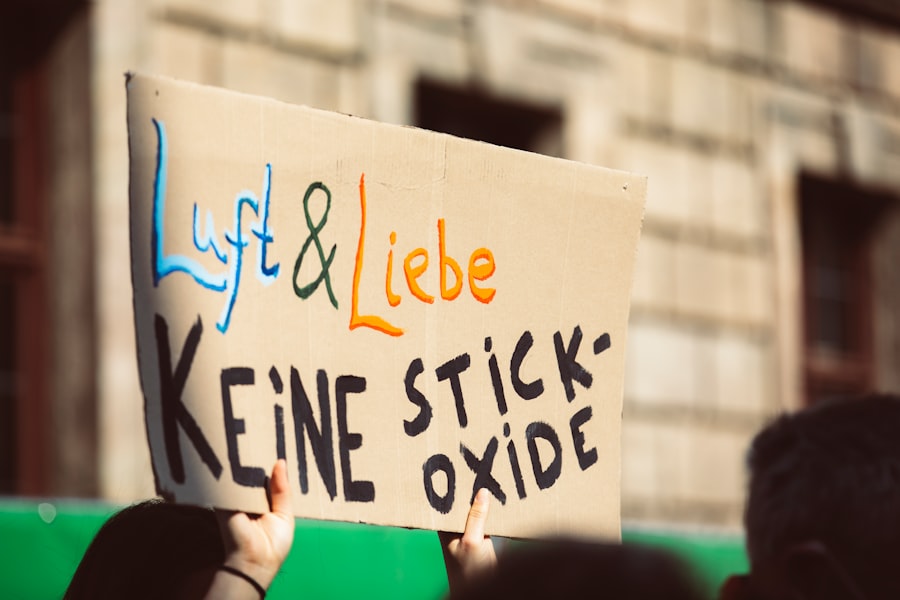Aftercare is a crucial aspect of any cosmetic or dermatological procedure, and understanding its significance can greatly enhance your overall experience and results. When you undergo a treatment, whether it’s a facial, laser therapy, or a more invasive procedure, your skin requires special attention afterward. This is the time when your skin is most vulnerable, and how you care for it can determine the success of the treatment.
By prioritizing aftercare, you not only promote healing but also maximize the benefits of the procedure, ensuring that your skin looks its best for as long as possible.
Neglecting proper aftercare can lead to issues such as infections, prolonged redness, or even scarring.
By following the recommended aftercare guidelines, you can significantly reduce these risks. It’s essential to view aftercare as an integral part of your treatment journey rather than an optional step. By committing to a thorough aftercare routine, you empower yourself to take control of your skin’s health and appearance.
Key Takeaways
- Aftercare is crucial for the healing and long-term results of any skincare treatment.
- Proper management of discomfort and redness is essential for a successful recovery.
- Protecting the skin from sun exposure is necessary to prevent damage and maintain results.
- Avoiding certain activities and products can help prevent complications and promote healing.
- Regular moisturizing and hydration are key to maintaining healthy and glowing skin.
Managing Discomfort and Redness
Experiencing discomfort and redness after a procedure is common, but managing these sensations effectively can make a significant difference in your recovery process. Initially, you may feel a sense of heat or tightness in the treated area, which is entirely normal. To alleviate this discomfort, consider applying a cool compress to the affected area.
This simple method can provide immediate relief and help reduce inflammation. Additionally, over-the-counter pain relievers may be beneficial if you find the discomfort to be more than just mild. Redness is another common side effect that can be concerning.
While it may be alarming to see your skin looking different than usual, it’s important to remember that this is often a temporary reaction. To manage redness, avoid hot showers or baths for the first few days post-treatment, as heat can exacerbate the issue. Instead, opt for lukewarm water and gentle cleansers to keep your skin calm.
If redness persists beyond what is expected, don’t hesitate to reach out to your healthcare provider for advice tailored to your specific situation.
Protecting the Skin from Sun Exposure

One of the most critical aspects of aftercare is protecting your skin from sun exposure. After undergoing a treatment, your skin may be more sensitive and susceptible to damage from UV rays. This heightened sensitivity makes it essential to take proactive measures to shield your skin from the sun. Wearing broad-spectrum sunscreen with an SPF of at least 30 is non-negotiable. Apply it generously to all exposed areas, even on cloudy days or when indoors near windows.
In addition to sunscreen, consider wearing protective clothing such as wide-brimmed hats and long sleeves when spending extended periods outdoors. Seeking shade during peak sun hours—typically between 10 a.m. and 4 p.m.—can also help minimize exposure.
Remember that protecting your skin from the sun is not just about preventing immediate discomfort; it’s also about safeguarding against long-term damage that can lead to premature aging or skin cancer.
Avoiding Certain Activities and Products
| Activity/Product | Reason for Avoidance | Alternative |
|---|---|---|
| Smoking | Health risks and secondhand smoke | Nicotine patches, gum, or therapy |
| Processed Foods | High in preservatives and additives | Fresh fruits, vegetables, and whole grains |
| Alcohol | Health risks and addiction | Non-alcoholic beverages or moderation |
| Plastic Bags | Environmental impact | Reusable cloth bags |
In the days and weeks following your treatment, it’s crucial to avoid specific activities and products that could hinder your healing process. High-intensity workouts or activities that cause excessive sweating should be temporarily set aside, as they can irritate your skin and increase the risk of complications. Instead, focus on gentle exercises like walking or stretching that won’t put undue stress on your body.
Additionally, be mindful of the skincare products you use during this sensitive period. Harsh exfoliants, retinoids, or products containing alcohol can irritate your skin and should be avoided until you receive clearance from your healthcare provider. Opt for gentle, hydrating products that are specifically formulated for post-procedure care.
This approach will help ensure that your skin remains calm and allows for optimal healing.
Moisturizing and Hydrating the Skin
Keeping your skin moisturized and hydrated is essential for promoting healing after any cosmetic procedure. Dryness can lead to discomfort and prolong the recovery process, so incorporating a good moisturizer into your routine is vital.
In addition to topical moisturizers, don’t forget about internal hydration. Drinking plenty of water throughout the day will help keep your skin hydrated from within. Aim for at least eight glasses of water daily, adjusting based on your activity level and climate conditions.
By prioritizing both external and internal hydration, you’ll create an optimal environment for your skin to heal and thrive.
Following a Proper Skincare Routine

Step 1: Cleanse with Care
Start with a gentle cleanser that won’t strip your skin of its natural oils; this will help keep your skin clean without causing irritation.
Step 2: Tone and Treat
Follow up with a soothing toner if desired, but ensure it’s alcohol-free to avoid drying out your skin. After cleansing, apply any prescribed serums or treatments recommended by your provider.
Moisturize and Protect
Finishing with a moisturizer is crucial. This layered approach allows each product to penetrate effectively while providing maximum hydration and protection. Consistency is key; sticking to this routine daily will help reinforce the benefits of your treatment and keep your skin looking radiant.
Monitoring and Reporting Any Unusual Reactions
As you navigate through the aftercare process, it’s crucial to monitor your skin closely for any unusual reactions. While some redness and discomfort are expected, any sudden changes—such as increased swelling, severe pain, or signs of infection—should not be ignored. Being vigilant about these symptoms allows you to address potential issues early on and seek professional guidance if necessary.
If you notice anything concerning, don’t hesitate to reach out to your healthcare provider. They are there to support you through this process and can provide valuable insights into what is normal versus what may require further attention. Keeping an open line of communication with your provider ensures that you feel confident in managing your recovery.
Scheduling Follow-Up Appointments
Finally, scheduling follow-up appointments is an essential step in ensuring that you achieve the best possible results from your treatment. These appointments allow your provider to assess how well your skin is healing and make any necessary adjustments to your aftercare plan. They can also address any concerns you may have and provide additional recommendations tailored to your unique needs.
Don’t underestimate the importance of these follow-ups; they are an opportunity for you to receive professional guidance as you navigate through the healing process. By staying engaged with your provider and adhering to their recommendations, you’ll be well on your way to enjoying the full benefits of your treatment while maintaining healthy, beautiful skin for years to come.
After undergoing laser hair removal, it is crucial to follow proper aftercare instructions to ensure the best results. One helpful article on laser hair removal aftercare can be found at this link. This article provides tips and guidelines on how to care for your skin post-treatment, including avoiding sun exposure, using gentle skincare products, and staying hydrated. By following these recommendations, you can help maintain the smooth and hair-free results of your laser hair removal treatment. For more information or to schedule a consultation, you can visit this link.
FAQs
What is laser hair removal aftercare?
Laser hair removal aftercare refers to the steps and precautions that should be taken after undergoing a laser hair removal treatment to ensure proper healing and optimal results.
Why is laser hair removal aftercare important?
Laser hair removal aftercare is important to minimize the risk of complications such as skin irritation, redness, and swelling. It also helps to promote faster healing and maintain the effectiveness of the treatment.
What are some common aftercare tips for laser hair removal?
Common aftercare tips for laser hair removal include avoiding sun exposure, using gentle skincare products, avoiding hot showers and baths, and applying soothing creams or gels to the treated area.
How long does it take for the skin to heal after laser hair removal?
The skin typically takes a few days to a week to heal after laser hair removal. However, this can vary depending on the individual’s skin type and the intensity of the treatment.
Are there any restrictions on activities after laser hair removal?
It is recommended to avoid activities that may cause excessive sweating, such as intense exercise, for a few days after laser hair removal. Additionally, swimming in chlorinated pools and using hot tubs should be avoided to prevent irritation.
Can I shave or use hair removal creams after laser hair removal?
It is generally safe to shave the treated area after laser hair removal, but it is important to wait until any redness or irritation has subsided. However, using hair removal creams or waxing should be avoided as they can irritate the skin.






